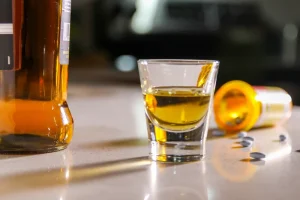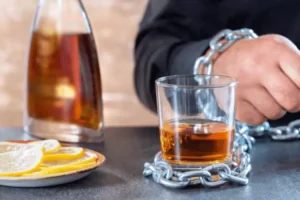
For some people, sunlight causes extreme burning, blisters, and pain. This problem is often passed down in families, https://ecosoberhouse.com/ but alcohol use can also trigger it. Your skin may wound easily, itch, and turn red when you’re in the sun.
Chronic fatigue syndrome
- This is why you need to to act if you suspect you have diabetes as it can lead to serious health concerns like vision loss, kidney disease, and stroke if left untreated.
- That’s because alcohol can affect the efficacy of some IBD medications and mess with test results.
- At the very least, you should limit alcohol as much as possible, especially if it’s making you unwell.
- It’s a vasodilator which causes blood vessels to expand creating redness, plus it releases histamine which again causes redness and flushing.
- This is bad news when it comes to skin health, since chronic inflammation has been linked to skin conditions and noticeable skin aging.
Because dehydration from drinking can cause dry mouth, bad breath the day after drinking can also occur (2). However, these conditions can also develop in people who don’t drink at all (5). Alcoholic drinks are high in calories and have no nutritional benefit to your body. Alcohol can have temporary and long-term effects on your physical appearance.
Here’s what’s happens to your skin when you stop drinking alcohol for Dry Jan…
Each of those consequences can cause turmoil that can negatively affect your long-term emotional health. If you drink every day, or almost every day, you might notice that you catch colds, flu or other illnesses more frequently than people who don’t drink. That’s because alcohol can weaken your immune system, slow healing and make your body more susceptible to infection. “Some people think of the effects of alcohol as only something to be worried about if you’re living with alcohol use disorder, which was formerly called alcoholism,” Dr. Sengupta says. When it isn’t working right, the toxins stay in your cells, which leads to warmth and flushing.

How Long After Quitting Drinking Does Skin Improve?
Along with weight gain, you may experience early signs of aging and even a larger change in appearance. Again, this is usually because alcohol interacts with normal body functions and may lead to deficiencies in key vitamins and nutrients. One study specifically explored the relationship between smoking and baldness. It can damage the hair follicles and impair other factors of the hair growth cycle. There’s also a link between alcohol withdrawal and thyroid disorders.
Facial Bloat
Small numbers of spider telangiectases are seen in healthy children and adults. They are more common in women, especially during pregnancy, as they are influenced by the female hormone, oestrogen. Blood vessels (the spider legs) radiate out in all directions from a central blood vessel (its body). Like other blood vessels, spider angiomas blanch when pressure is applied. They are most frequently found on the face, v of the neck, chest, arms, hands and abdomen. Setting clear goals, finding non-alcoholic alternatives, seeking support, and staying busy with alcohol-free activities can help reduce alcohol intake.
- A person should speak with a doctor, close friend, therapist, or local support group to find ways to help give up alcohol.
- Use gentle skincare products as your face gets used to your new routine.
- Steatotic liver disease develops in about 90% of people who drink more than 1.5 to 2 ounces of alcohol per day.
- One of the main reasons skin takes such a beating from a few too many cocktails is that alcohol is a diuretic, says Y.
White Wines
- Drinking alcohol may make you more likely to develop certain skin conditions, such as psoriasis, rosacea, and seborrhoeic or nummular dermatitis.
- It might not be easy to remember this step, but it’s crucial for managing your hangover and skin troubles the next day.
- Soap and water are preferred for hand hygiene throughout the day, but in the absence of convenient access to this method, using a hand sanitizer is the next best thing.
- It’s common in people who also have asthma, sinus disease, or problems with aspirin and other nonsteroidal anti-inflammatory drugs (NSAIDs).
- Small numbers of spider telangiectases are seen in healthy children and adults.
If you’re able to quit or reduce your alcohol consumption while you’re in your 20s, your skin in your 30s, 40s and beyond will thank you. That said, it’s never too late to start making healthier decisions, and Dry January may be the perfect time to start. Liver disease isn’t reversible, but you can treat some of the skin conditions it causes to help make symptoms less noticeable. Drinking alcohol may make you more likely to develop certain skin conditions, such as psoriasis, rosacea, and seborrhoeic or nummular dermatitis.

Oxidative stress damages every type of cell in your body, including your skin. We don’t need to tell you alcoholic beverages are popular in social settings, but did you know consuming a lot of them can cause a number of short- and long-term effects on the skin? If you’ve ever woken up with not only a headache and an egg sandwich craving after a night out, but a new pimple, puffy eyes, and a particularly dull, lackluster complexion, here’s why. Limiting the amount of alcohol you drink, and having plenty of water or soft drinks between alcoholic drinks can help avoid dehydration – which is also the main cause of a hangover. Although drinking alcohol can cause a person to fall asleep faster, it may cause them to wake up more often during the night.
These effects are temporary, and a person can notice them the day after a night of drinking, whether or not they have AUD. Based on the results, you may need to take steps to bring down your blood sugar if they are high. This includes taking fast-acting insulin or exercising to burn off excess glucose. There are also continuous glucose monitors that provide real-time readings 24 hours a day and can alert you if your blood sugar is too high or too low. If results are inconclusive or borderline, your healthcare provider may recommend a three-hour PPG in which you are provided three sugary solutions and your blood is tested four times. The results of the three-hour test are especially useful in diagnosing gestational diabetes.

Within two hours of eating, your insulin and blood sugar levels should return to normal. Glucose is your body’s main source of energy which you obtain how alcohol affects your skin from carbohydrates you eat. Any glucose that remains unused is converted into a stored form of glucose, called glycogen, and warehoused in the liver.



